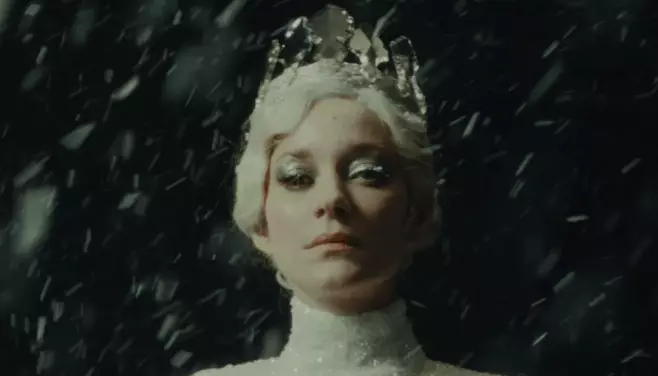Marion Cotillard, the Academy Award-winning actress renowned for her transformative portrayals, delves into the complex world of her character Cristina in the upcoming film *The Ice Tower* (*La Tour de Grace*). At the Berlinale Film Festival, Cotillard opened up about her experience working alongside the young actress Clara Pacini, revealing the insecurities and creative energies that sparked her performance. Rather than focusing solely on her accolades, this article explores the intricate layers of Cotillard’s portrayal, the film’s captivating storyline, and the thematic depth it brings to contemporary audiences.
Intimidation and Inspiration: The Dynamic Duo
Upon meeting Clara Pacini, Cotillard experienced an unexpected wave of intimidation. She openly shared her discomfort during their initial encounter: “I didn’t dare to look her straight in the eyes.” This sense of vulnerability set the stage for a unique collaboration between the two actresses, ultimately enriching their performances. Cotillard’s acknowledgment of Pacini’s charisma not only highlights the impact of their dynamic but also reflects the way in which actors can draw inspiration from one another. In an industry often dominated by ego, the willingness to be intimidated reveals a maturity that enriches the artistic process.
To embody the character of Cristina, Cotillard undertook an immersive preparation process alongside her co-star. She elaborated on her methodology, explaining that she constructed a narrative of rivalries, failures, and refusals that defined Cristina’s journey. This creative exercise allowed Cotillard to forge a complex persona, giving her the freedom to explore the depth of her character’s decline. “I want to see that mystery for myself,” she stated, underscoring her desire for authentic surprises during filming. This approach fosters a sense of realism that resonates with viewers, capturing the fluctuations of success and failure faced by artists.
The narrative of *The Ice Tower* is not just a tale of one woman’s struggles; it situates itself within the meta-framework of filmmaking. Cristina is not only an actress but also an actress playing an actress, blurring the lines between reality and fiction. Cotillard astutely remarked on the layers of storytelling inherent in such a structure, where “images within images” challenge viewers to engage with the content critically. This concept elevates the film beyond a mere narrative, creating a thought-provoking experience for the audience.
Visual Symbolism: From Mirrors to Cameras
Director Lucile Hadžihalilović’s reinterpretation of Hans Christian Andersen’s *The Snow Queen* serves as more than just a backdrop. By replacing the traditional mirror with a camera in her adaptation, Hadžihalilović offers a profound commentary on modern society’s obsession with self-image and perception. Cotillard praised this element, noting its relevance to today’s cultural landscape, which constantly grapples with the complexities of identity and representation.
The Allure of Fairy Tales and Moral Complexity
Hadžihalilović’s attraction to fairy tales lies in their inherent contradictions—beauty and terror coexist, revealing moral ambiguities that challenge conventional narratives. Her eagerness to explore *The Snow Queen* signifies a deep-rooted understanding of the genre’s capacity to engage with audiences on a psychological level. By choosing a story that resonates with both innocence and darkness, the film speaks to universal themes of growth and self-discovery.
As *The Ice Tower* prepares for its theatrical release in France, anticipation builds not only for Cotillard’s performance but also for the layered storytelling that promises to captivate audiences. With its unique blend of fairy tale elements, exploration of identity, and an emphasis on the significance of human interactions, the film emerges as a poignant reflection of contemporary society. In allowing audiences to witness the personal and professional journeys of its characters, *The Ice Tower* stands poised to leave a lasting impression, inviting viewers into a world where every reflection—whether through a camera lens or a character’s eyes—holds profound significance.


Leave a Reply